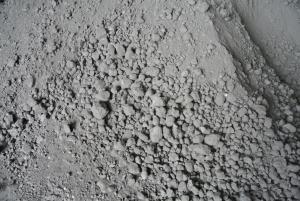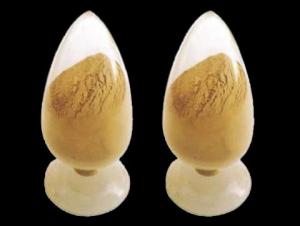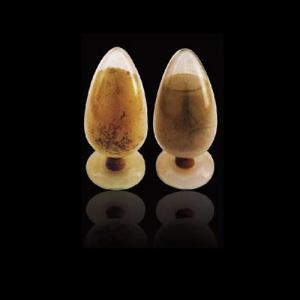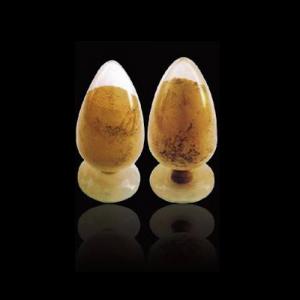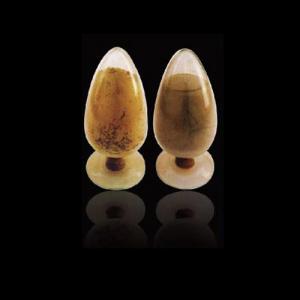Silicon nitride bonded silicon carbide products -ramming
- Loading Port:
- Qingdao
- Payment Terms:
- TT OR LC
- Min Order Qty:
- 5 m.t.
- Supply Capability:
- 500 m.t./month
OKorder Service Pledge
OKorder Financial Service
You Might Also Like
Annual supply: Our company has passed ISO9001 quality management system certification and SGS certification. And the annual supply of shaped and unshaped refractory product is 28, 800-35, 000 tons.
Annual exports: Now we have gained a global sales network reaching Taiwan, Russia, Mongolia, South Korea, Vietnam, Pakistan, Bulgaria, Finland, Greece, Spain, Congo, Angola, South Africa, and Maldives, Jordan and so on. The export figure is more than USD 4 million.
Production equipment: Production and testing equipments are new, complete and automated or semi- automated. Such modern facilities and equipments have provided the fine technical guarantee for the production and testing.
Testing equipment: Our company's testing equipments as follows: High Temperature RUL TesterBulk Density TesterThe Pressure
Strong professional: Our company has thirty years producing experience in refractory product. Our manager will supervise on a various refractory' s production materials, process control, quality supervision and package delivery, and ensure the products are 100% qualified.
- Q:What are the advantages of using castables in the iron and steel industry?
- There are several advantages of using castables in the iron and steel industry. Firstly, castables offer excellent thermal shock resistance, allowing them to withstand sudden temperature changes during the manufacturing process. This helps to prevent cracking and prolongs the lifespan of the refractory lining. Secondly, castables provide high strength and abrasion resistance, making them suitable for withstanding the harsh conditions of iron and steel production. They can withstand the abrasive nature of molten metal and slag, ensuring long-lasting performance. Additionally, castables offer flexibility in terms of installation. They can be poured or gunned into place, allowing for easy and efficient lining of various shapes and sizes. This flexibility also helps in repairs and maintenance, as damaged areas can be easily patched up. Lastly, castables have good chemical resistance, enabling them to withstand the corrosive effects of molten metal and various metallurgical processes. This resistance helps to maintain the integrity of the refractory lining and ensures consistent production quality. Overall, the advantages of using castables in the iron and steel industry include thermal shock resistance, high strength, abrasion resistance, flexibility in installation, and chemical resistance. These properties contribute to improved efficiency, extended refractory life, and reduced downtime, ultimately benefiting the overall productivity of the industry.
- Q:How do monolithic refractories resist chemical attack from molten metals and slags?
- Monolithic refractories resist chemical attack from molten metals and slags due to their chemical composition and structure. They are typically designed with high levels of resistance to corrosion and erosion, making them suitable for harsh environments. Additionally, they have low porosity, which reduces the penetration of molten metals and slags into the refractory material. The presence of certain additives and bonding agents further enhances their chemical resistance, preventing reactions between the refractory and the molten substances. Overall, monolithic refractories offer a strong barrier against chemical attack, ensuring their durability and longevity in such demanding conditions.
- Q:What are the considerations for repairing and patching monolithic refractories?
- Considerations for repairing and patching monolithic refractories include assessing the extent of the damage, identifying the cause of the damage, selecting the appropriate repair material, ensuring proper bonding and curing, and following manufacturer's instructions and recommended procedures. Additionally, factors such as temperature, chemical exposure, and mechanical stress should be taken into account to ensure the repaired refractory maintains its performance and longevity.
- Q:How do monolithic refractories perform in electric arc furnace roof applications?
- Due to their unique properties and characteristics, monolithic refractories are extremely effective when used in electric arc furnace (EAF) roof applications. Comprised of a single, solid material, these refractories offer several advantages specific to this application. To begin with, monolithic refractories provide exceptional thermal insulation, a critical factor in EAF roof applications. Traditional brick refractories can suffer structural damage from the intense heat generated in the furnace. However, monolithic refractories possess a higher resistance to thermal shock, reducing the risk of cracking and spalling. This ensures that they maintain their integrity and insulation properties even under extreme temperature conditions. Furthermore, monolithic refractories exhibit high strength and abrasion resistance, guaranteeing their durability and longevity in EAF roof applications. The roof of an electric arc furnace is subjected to harsh conditions, including the impact of scrap materials and the erosive effects of molten metal and slag. Monolithic refractories are specifically designed to withstand these challenges, offering superior resistance to mechanical wear and erosion. Another advantage of monolithic refractories lies in their ease of installation. Unlike traditional brick refractories, which necessitate time-consuming and complex installation processes, monolithic refractories can be applied rapidly and efficiently. They can be cast, gunned, or sprayed onto the roof surface, adapting to any shape or contour. Consequently, installation or repair downtime is reduced significantly. Moreover, monolithic refractories contribute to increased energy efficiency in EAF roof applications. Their superior insulation properties minimize heat loss, resulting in reduced energy consumption and cost savings. This is particularly crucial for electric arc furnaces, as their efficiency and productivity heavily rely on maintaining high temperatures for metal melting and processing. Any heat loss can have a significant impact on these factors. In conclusion, monolithic refractories are highly suitable for electric arc furnace roof applications due to their exceptional thermal insulation, strength, abrasion resistance, ease of installation, and energy efficiency. These refractories offer significant advantages over traditional brick refractories, ensuring optimal performance and extended service life in the demanding environment of an electric arc furnace.
- Q:How do monolithic refractories contribute to the overall efficiency of ladle cleaning operations?
- Monolithic refractories play a crucial role in enhancing the overall efficiency of ladle cleaning operations. These refractory materials, which are composed of a single, homogeneous structure, offer several key advantages that contribute to improved efficiency. Firstly, monolithic refractories have excellent thermal insulation properties. This means they can withstand high temperatures without cracking or deteriorating, allowing for more efficient and effective ladle cleaning operations. By maintaining a consistent temperature, these refractories minimize heat loss and ensure that the cleaning process can be carried out without interruptions or delays. Secondly, monolithic refractories have high resistance to chemical attacks. Ladles used in steelmaking processes often come into contact with aggressive molten metals and slag, which can erode and corrode the refractory lining. However, monolithic refractories are specifically designed to withstand these harsh conditions, ensuring a longer service life and reducing the need for frequent repairs or replacements. This not only saves time but also reduces the overall cost of ladle maintenance. Furthermore, monolithic refractories have excellent flowability and workability. They can be easily shaped and installed in the ladle lining, allowing for quick and precise application. This ease of installation translates into shorter downtime during ladle cleaning operations, as the refractory lining can be repaired or replaced swiftly. Additionally, the flowability of monolithic refractories enables better coverage and adherence to the ladle's surface, ensuring that no gaps or weak points are left behind. This enhances the overall effectiveness of the cleaning process and prevents any potential contamination or reactivity issues. In conclusion, monolithic refractories contribute to the overall efficiency of ladle cleaning operations by providing excellent thermal insulation, high resistance to chemical attacks, and easy workability. These properties result in reduced downtime, increased durability, and cost savings, making monolithic refractories a vital component in optimizing ladle cleaning processes.
- Q:How are monolithic refractories installed and repaired in iron and steel plants?
- Monolithic refractories are essential components in iron and steel plants, as they provide high-temperature resistance and insulation. They are commonly used in various applications, such as lining furnaces, ladles, and other equipment that come into contact with molten metal. The installation of monolithic refractories in iron and steel plants typically involves several steps. First, the surface that will receive the refractory material must be prepared by removing any existing refractories or contaminants. This can be done through mechanical methods, such as sandblasting, or chemical cleaning processes. Next, the monolithic refractory material is mixed with water or a suitable binder to form a workable consistency. This mixture is then applied to the prepared surface using various techniques, such as gunning, casting, or troweling. Gunning involves using a high-pressure gun to spray the refractory material onto the surface, while casting involves pouring the mixture into a mold. Troweling is a manual method that involves spreading the refractory material with a trowel. Once the refractory material is applied, it needs to be properly cured or dried. This is usually achieved by allowing the material to air dry or by using controlled heating. The curing process is crucial to ensure the refractory material develops the desired properties, such as strength and resistance to thermal shock. In terms of repairs, monolithic refractories in iron and steel plants can deteriorate over time due to the harsh operating conditions. When repairs are needed, damaged or worn-out areas of the refractory lining must be identified. This can be done through visual inspection or non-destructive testing techniques. The repair process typically involves removing the damaged refractory material by chipping, drilling, or cutting. The surface is then prepared as mentioned earlier, and a new batch of monolithic refractory material is applied to restore the lining. The repair material should be compatible with the existing lining and provide similar properties to ensure the overall integrity of the refractory structure. It is important to note that the installation and repair of monolithic refractories in iron and steel plants require skilled personnel with knowledge of refractory materials and installation techniques. Additionally, proper safety measures should be followed to protect workers from potential hazards, such as exposure to high temperatures, dust, and chemicals. Regular inspection and maintenance are also crucial to identify any potential issues early on and prevent major failures that could impact production and safety.
- Q:How do monolithic refractories prevent heat loss through radiation?
- Monolithic refractories prevent heat loss through radiation by forming a continuous and seamless layer that acts as a barrier to thermal radiation. This layer reflects and absorbs the radiant heat, preventing it from escaping and thus minimizing heat loss. Additionally, the high thermal conductivity of monolithic refractories allows them to efficiently conduct and distribute heat, further reducing the potential for radiation heat loss.
- Q:How do monolithic refractories resist erosion from molten metals and slags?
- Monolithic refractories resist erosion from molten metals and slags through several mechanisms. Firstly, they have a high melting point, which allows them to withstand the high temperatures of molten metals and slags without any significant degradation. Secondly, they have a dense and compact structure, which reduces the penetration of molten metals and slags into their surface. Additionally, monolithic refractories often contain additives such as antioxidants or slag resistance agents, which further enhance their resistance to erosion.
- Q:How do monolithic refractories resist thermal shock in the iron and steel industry?
- Monolithic refractories are designed specifically to withstand thermal shock in the iron and steel industry, achieved primarily through their unique composition and structure. To begin, high-quality raw materials, such as alumina, magnesia, and silica, are used to create monolithic refractories. These materials are chosen carefully for their excellent thermal properties, including a high melting point, low thermal conductivity, and favorable thermal expansion characteristics. The manufacturing process of monolithic refractories involves precise control over the distribution of grain sizes and the addition of bonding agents. This results in a dense and uniform structure, enhancing their resilience against thermal shock. The bonding agents also play a crucial role in strengthening and maintaining the integrity of the refractories. Furthermore, additives are often incorporated into monolithic refractories to increase their resistance to thermal shock. These additives, such as zirconia, silicon carbide, or graphite, enhance the refractories' ability to endure rapid temperature changes. Moreover, monolithic refractories are designed with low porosity to minimize the penetration of molten metal or slag into the material. This helps prevent the formation of cracks and spalling, which can occur due to thermal shock. In addition, monolithic refractories are commonly applied as a lining or coating on furnace surfaces or other equipment. This creates a protective barrier, reducing direct exposure to extreme temperatures and thermal cycling. Overall, the combination of high-quality raw materials, meticulous manufacturing processes, additives, low porosity, and appropriate application techniques make monolithic refractories highly resistant to thermal shock in the iron and steel industry. They can endure rapid temperature changes, prevent cracks, and maintain their structural integrity, ensuring the reliable and efficient operation of furnaces and other equipment in this demanding industry.
- Q:How do monolithic refractories withstand thermal shock?
- Monolithic refractories are able to withstand thermal shock due to their unique properties and composition. Thermal shock occurs when there is a rapid change in temperature, causing stress and potential damage to the refractory material. However, monolithic refractories are designed to have high thermal shock resistance, and this is achieved through several mechanisms. Firstly, the composition of monolithic refractories includes materials with low thermal expansion coefficients. This means that they have a minimal change in size or volume when exposed to different temperatures. This property allows the refractory material to withstand thermal shock by minimizing the stress caused by temperature fluctuations. Secondly, monolithic refractories have excellent thermal conductivity. This property allows them to efficiently transfer heat away from the hot areas, preventing localized overheating and reducing the risk of thermal shock. The rapid dissipation of heat helps to maintain a more uniform temperature distribution within the refractory material, thus reducing the chances of cracking or spalling. Additionally, the binding agents used in monolithic refractories play a crucial role in their thermal shock resistance. These binders provide strength to the refractory material and help to maintain its integrity during thermal cycling. The binders also contribute to the refractory's resistance to thermal shock by reducing the permeability of the material, preventing the penetration of hot gases or liquids that could cause damage. Moreover, the installation technique of monolithic refractories is an important factor in their ability to withstand thermal shock. Monolithic refractories are typically applied as a single, continuous layer, eliminating the joints and seams that can be weak points in other refractory systems. This seamless installation method ensures better thermal shock resistance as there are no weak points for cracks to propagate. In summary, monolithic refractories withstand thermal shock through a combination of factors including their low thermal expansion coefficients, high thermal conductivity, suitable binding agents, and seamless installation techniques. These properties and design considerations allow monolithic refractories to effectively handle rapid changes in temperature and maintain their structural integrity, making them ideal for applications that involve thermal cycling and extreme temperature variations.
1. Manufacturer Overview |
|
|---|---|
| Location | |
| Year Established | |
| Annual Output Value | |
| Main Markets | |
| Company Certifications | |
2. Manufacturer Certificates |
|
|---|---|
| a) Certification Name | |
| Range | |
| Reference | |
| Validity Period | |
3. Manufacturer Capability |
|
|---|---|
| a)Trade Capacity | |
| Nearest Port | |
| Export Percentage | |
| No.of Employees in Trade Department | |
| Language Spoken: | |
| b)Factory Information | |
| Factory Size: | |
| No. of Production Lines | |
| Contract Manufacturing | |
| Product Price Range | |
Send your message to us
Silicon nitride bonded silicon carbide products -ramming
- Loading Port:
- Qingdao
- Payment Terms:
- TT OR LC
- Min Order Qty:
- 5 m.t.
- Supply Capability:
- 500 m.t./month
OKorder Service Pledge
OKorder Financial Service
Similar products
New products
Hot products
Related keywords
